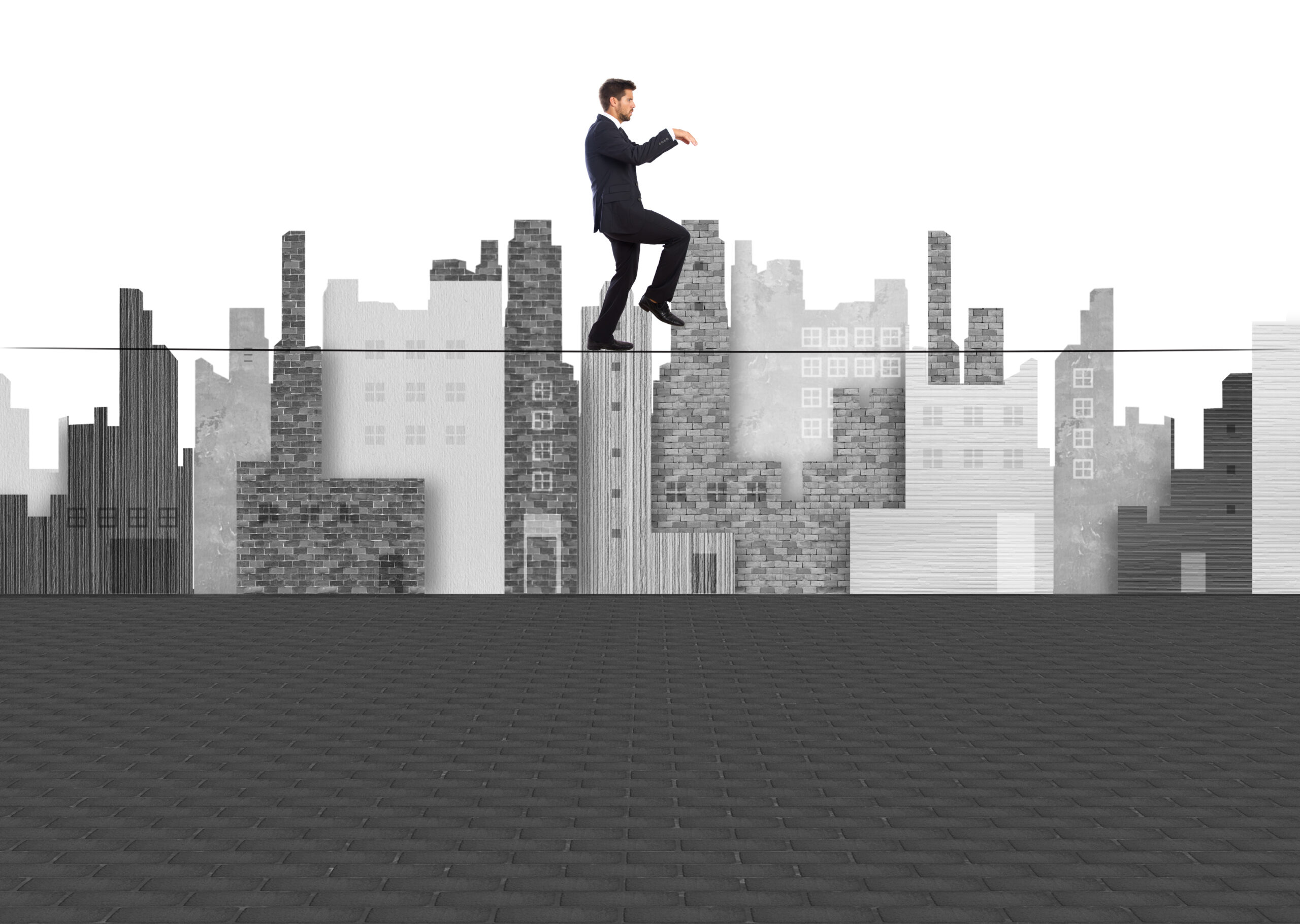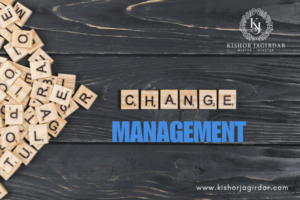Understanding the
change that is hitting all of us and managing it has become almost the primary
task to survive as a business enterprise
The current change
that is engulfing every industry with market volatility, rules being made and
broken on almost daily basis, we are witnessing unprecedented churn that will
bring in new breed of start ups and many of the old will sink. Many more even
in the fortune 500 may not live to exist in the next 5 years. This is not to be
mistaken as a passing storm but a permanent changed weather.
Socially people
are waking up to the fact all that we have known in the last 60 years and
identified ourselves with in terms of prosperity, life styles, challenges,
dependence, status symbol etc are completely disconnected with our natural
support systems.
Across the coffee
table I find the discussion on ‘Greed’ quite intriguing as this is one of the
causes of the current situation.
’Greed’ technically means when one has enough one still
aspire for more and then get caught into the more and more
and more like a bottom less pit. In this state of mind we get into a situation
where the greed overtakes the available resources thus a self destructive
imbalance..
The idea of making
profit out of an activity is Dharma
as long as its within the fold of replenishment but when we leave that and
drive after more and more profit with little responsibility to the resource and
limit our motives only to our enterprise or our compound walls then it becomes Adharma, thus creating an imbalance
in the economic cycle.
That’s the reason
enterprises driven to grow faster and faster have finally ended up outgrowing
their business resources and are way laid today like (GM) General
Motors, Lehman Brothers, Enron, Author Anderson,
PWC, AIG and the infamous Satyam computers before the acquisition by Mahindra
Tech. Many global brands are being bailed out by the governments for the
sake of stability in their economies and investor confidence. These are not an
isolated case.
There is growing
need to unclutter our habits and life styles to go back to our basic values
systems. We have even forgotten the small pleasure of life like a garden,
family togetherness, eating habits and search for the missing “thing” in
Shopping malls. To bridge the real necessities and build
distinction of the ‘Greed’ element. Minimize credit cards, mortgage loans,
credit facilities which are nothing but the vicious loop if not handled
carefully. The question is how one can be careful at all times without weak
moments of decision making that too in the midst of myriad distractions.
Therefore seeking happiness in simplicity and self reliance becomes evidently
of intrinsic value .
Life cycle of organizations were predicted to be 12 years
in 2001 and today in 2009 its now come
down to 5-6 years. That means any organization with a
business model can survive or exist for only 5-6 years now in the current rate
of market dynamics if they don’t manage to re-invent themselves or innovate to
the next feasible level.
Business ethics
and business dynamics have changed forever.
We are now going
back to basics in both organizational structures as well as the way we conduct
a business.
The HR of today are with the dilemma as we are now a competency
based workforce (like in the later Vedic period) .But the values and the life
styles known in the last 60 years cannot be applied on the generation E (those
born in 1990s).HR practices and performance systems were structured based on
the previous generation values. The HR heads (generation Y and X) don’t have a
clue as to how to handle the new breed who have more information than the peers
and different set of value system. They have wide access to information but low
retention power. They are more inclined towards quick fix approach than long
term. They are more individualistic than team worker. Passive acceptance has
been replaced by rebellious attitude sprinkled with consumerism.
Flexi time means
they can walk in their Bermudas to office with result focus and also enjoy the
best of life pleasures. The performance management systems of today may not be
relevant to their work culture. They are islands of mini America
and Europe found everywhere in
our cities. A manager can survive with them if he /she enjoy good feedback. In
the same manner a trainer or a teacher can survive only with good PR skills
amidst such a crowd. The ‘Guru Shisya Parampara’
appears like an echo of the past with increasing consumerism approach in
education as well. The new breeds are loud, aggressive, an impatient lot who
look upon more to the glamour world as role models. The biggest challenge is
making them stick to the organization.
Rules are being made in chaos.
Only to be broken by another
Parents from the middle class
families do not encourage children into IT any more. As was the craze from last
20 years
In the next 10 years world over all the economies will slow down as the
population growth is already negative. Economies including China
will have heavy population of pensioners to run the economy.
While India
will have a surplus youthful population of 47 million unless we get into any
natural disasters.
How will we manage
this kind of population?
We must create
opportunities to engage the skills of the population in terms of self
employment and job availability out of industries that don’t even exist today.
The Perma frost in Siberia has kept large and heavy reservoir of
methane which is 20 times stronger in
green house effect as compared to CO2 buried under the soil
from ice age. Now they have started to Thaw…
No economist on this earth or scientist or any kind of
analyst can accurately predict its impact on the world and the way mankind will
be affected once this deposit of methane gets released to the atmosphere.
We are already
facing failed monsoon, erratic rain pattern, failing crops, soil degradation,
farmers migrating to cities in hordes giving up their occupations, food crisis,
and unprecedented natural calamities.
Suddenly
environmental sustainability is an imperative for all businesses, hitting at
their strategic cores with the threat of soaring energy prices, along with the
need to be accountable for carbon emissions and to manage the potential risk of
not minimizing greenhouse impact.
Once running an
environmentally friendly business was simply a socially responsible way to
behave. It was feel-good stuff that enhanced a business’ reputation, warmed the
hearts and minds of customers and shareholders and proved a handy promotional
angle as well. But it was optional.
Not anymore.
Climate change and environmental sustainability made a mega-leap over the past
year or so. Its urgency was highlighted by a combination of frightening
science, heavyweight spokespeople and an alignment of globally powerful
governments committed to cutting greenhouse gas (GHG) emissions, in particular
carbon dioxide (CO2), in what may be an uncomfortably tight timeline.
There’s not only
the issue of ensuring a healthy, habitable world for future generations, but
also some serious commercial realities to consider. As part of the supply
chains of bigger businesses, smaller players will also need to minimise their
GHG emissions, if not strive to be carbon neutral. Although regulation is not
currently forcing them to get their environmentally sustainable houses in
order, the marketplace will, insist the experts.
In a short time,
all businesses will need to know their carbon footprints or run the risks of
others not wanting to do business with them and putting their shareholders and
customers offside. What’s more, companies will need to know not just the impact
of their operations but also the carbon footprint of the products and services
they are selling as well, so purchasers can factor these into their own carbon
calculations
The way to calculate your carbon footprint
This can be as
straightforward as using one of the Australian greenhouse office calculators
applicable for smaller businesses.
Calculators differ
for office-based and hospitality businesses but include standard emissions
categories:
- Energy
- Fuel
- Business travel
(by vehicle, public transport and air) - Office
space and contents - Waste,
water and sewerage, and food
The calculators
work on the rupee/USD spends or quantity purchased in a particular timeframe.
Defining the scope
Scopes developed
by the World resources institute for the GHG Protocol are used as the
definitions for conducting audits.
Scope 1: Emissions are direct greenhouse
gas emissions from sources that are owned or controlled by a company, such as
fuel combustion and manufacturing processes.
Scope 2: Emissions are indirect
emissions associated with the generation of purchased electricity.
Scope 3: Emissions are indirect emissions that arise as a
consequence of the activities of a company but occur from sources not owned or
controlled by the company.
The impact on the
business is very huge by Global warming. Most of us are still in the slumber
and are bound to be taken unaware.
Petrol reservoirs
now being discovered are the scanty level deposits as the larger ones are found
first and they are already depleted. We have only another 20 years of life
cycle to see petrol. Coal is fast getting depleted so in another few years we
will have to struggle to run our GRIDs for power generation as India’s
over 80% power generation comes from thermal energy.
Without power
supply how will India
support its IT capital like Bangalore
which uses huge supply to keep it going? Where people leave their systems on
for 5 days a week and 7 days a week for the central AC .Are we making
arrangement to change over to Green Energy
– Solar, gas fired digesters, wind energy, bio mass etc
The Karnataka government has already taken action on one year
regulated power cut and austerity measures to face the severe shortage in
supply as against demand.
In the next few years we need to see the growth of small wind
energy options atop buildings and multiple energy storage options via bio mass,
solar, wind energy. The Government will have to give high incentives and
encourage innovation where we shall have retailing of energy supply as cheap as
Lemon juice being sold on the streets of India.
This is unthinkable now but so was the mobile service in 1995-7 .Today we are
speaking at 50 paise per call as against Rs 18 per outgoing call in those days.
What is in it for the SMEs
With the wrecking
ball of recession battering the world economy, Indian small and medium
businesses (SMEs) have started cowering in bunkers. They have stopped talking
about growth; its mention now seems to generate a cynical smirk.
Yeah, businesses
are facing great difficulties everywhere. The world’s strongest economies like
the US, Japan
and Germany
have already sunk into deeper recession while many others are just on the verge
of an economic doom. Some of the world’s biggest business lions are lying on
deathbeds while thousands of SMEs from all over the world have already taken
rest in their coffins!
In India
too, the situation seems not to so well as everyone is harping on the fear of a
protracted recession and our policy makers are warning that the impact of a
global slowdown could be more severe in coming days especially now with the
H1N1 flu epidemic and deaths pouring from all regions of the country. Already,
some industrial sectors like real estate, IT and textiles have started feeling
the heat of a slowdown.
How many Indian
Industries will be forced to shut down or shift to the new emission level?
We are sitting on
a time bomb!!
How do we stay
competitive in business and survive in these uncertain times and give up the
baggage of the last 60 years of Industrialization and change to a new world
order that is evidently in the making whether we like it or not.
The illiterates in the next decade will not be those who
cannot read or write but those who are unable to un-learn and re-learn.
How
to survive this
Step one – Analyze
1) Understand the
nature of the downturn as this one is a long one. Japan
in a similar situation in 1991 took 18 years to stabilize. USA
and its dependent world economies may not take so long but surely it will be a
long journey out of the tunnel.
2) Loss of
competitiveness due to currency rate volatility. There is strong possibility of
US Dollar being replaced as the world’s sole currency of transaction shortly
which can throw the international trade into chaos for some time till EU Dollar
take over.
3) Loss of
consumer confidence
4) Heavy burden of
consumer and corporate debt
5) Poor management
skills within indigenous industries
7) Fear driven
market knee jerk sentiments
6) Poor data
Infrastructure
8) Unrest in
employees
9) Purchase Orders
being kept on hold and shrinking market share
Step Two – Measures
Unprecedented
situations require extra ordinary solutions. Present challenges call for
1) Deep
introspection for selection and adoption of remedial measures.
2) Extensive cost
cutting,
3) Campaign to
repeal outdated laws, rules and procedures,
4) Strict adherence
to basic norms appears desirable.
5) New
acquisitions, partnerships and markets must be explored and successfully tapped
6) Efficiency must
be rewarded.
7) Adherence to
ethical norms
8) Rigid quality
control would certainly bring out the winners.
9) Plan
a response that can reduce the effect of the recession.
10) Invest in
Management education; promote business health checks, business mentor schemes.
11) Reduce
bureaucracy streamline government services
12) Invest in IT
infrastructure
13) Utilize tax
planning to reward internationally focused business and embryonic strategic
businesses.
14) Support
entrepreneurship. It will play an increasingly important part in re-energizing
our economy. It is the engine of growth, jobs and opportunity. Commercial finance
providers must then be supportive in providing access to facilities that keep
pace with growth.
15) Support and
expand business investment schemes frugally.
16) Relentlessly
innovate to find better way of business practices and develop business cultures
that competition cannot easily replicate.
17) Shift from
Cluster management to collective management. Use your resources to survive as
an industry and not dwell in isolated islands by active industry participations
and associations for sharing solutions; market information and brainstorming.
18) Smaller
enterprises can emerge stronger and adoptable as they are able to migrate to
new business models very quickly. Virtual teams, teleconferencing, skype VOIP
can replace the way business development functions across different
geographical territories and still remain price sensitive.
19) Every
recession has created a new set of entrepreneurs and industry trends so let not
the fear of the situation numb the SSI units. Stuart Watson, partner at
Ernst & Young recently said: “The current environment is creating
opportunities for entrepreneurs. It is easier to hire skilled labour and find
available premises to let for new businesses. Those most likely to succeed are
those with small start-up costs, quick routes to market and most importantly,
those that will deliver to customer’s cash savings. Microsoft was
created out the recession of 1971
Here are some inspiring examples: The US
passed legislation in 2007 to phase out the bulbs with high emission by 2012
when there was no alternate market that even existed. At that point of time it
sounded absurd. Today we see innovation having found a solution in two years
time with many innovative products that have rolled out already which are not
only the old bulbs invented by Edison but also meeting the low emission
parameters
The Indian Supreme Court has upheld the HC order on
31st July 2009 ruling all vehicles older than 15 years from the Kolkata
Metropolitan Development Authority (KMDA) area, would go off the roads after a
decade long battle to minimise pollution.Nearly 2,25,000 trucks and tankers in
the state are also likely to go off the roads due to the HC decision.
Few organizations
and leadership who
have been able to visualize the change have pushed their people into relentless
innovation as a measure to remain competitive. Some of the ground breaking
incremental innovations that is worth noticing is Tata Motors switching to
hybrid engines for their NANO and INTEL introducing in
coming years a car that can give mileage for 80 kms on 1
liter of water. The Product named 6th Sense which will replace the
experience of mobile communication. The Flying Car to be launched in 2012.Reliance giving 100% connectivity to rural India.
Cisco launched the Virtual conference product in Bangalore last
year which is called ‘Teleporting’ which is a physical imaging via
optical fiber transmission in 3 secs across anywhere in the globe which will
reduce our carbon footprint in the coming years. All these are change inducers
who will change their respective domain forever. Out of the above most of them
are from small enterprises that actually innovated the product.
The future will be dominated by SMEs and SSI units unlike
all the last 60 years
The decision taken
now and the actions we exhibit in the present and next few years will determine
“how we shall exist”.
The change is inevitable
Kishor Jagirdar is a practicing Strategic
Management Specialist and a Change Management activist. Founder of Infopace
Management Pvt Ltd .



